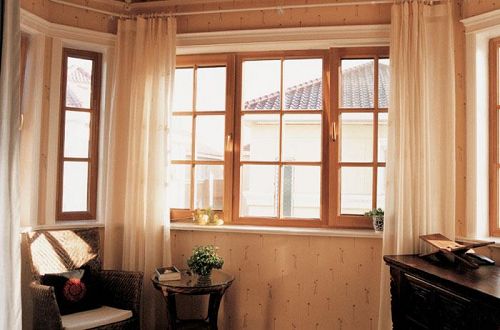Energy saving doors and windows provide a broad space for development
2025-08-13 07:35:41
 In China, doors and windows are among the most energy-intensive components of building enclosures, accounting for 40% to 50% of the total energy consumption. This is especially significant in heating or cooling conditions. For instance, during winter, heat loss through single-glazed windows can account for 30% to 50% of the heating load, while solar heat gain through the same windows in summer adds 20% to 30% to the air conditioning load. Compared to buildings in countries like Canada, Chinese buildings often experience over twice the heat loss due to less efficient window systems.
Improving the thermal performance of doors and windows is essential for enhancing indoor comfort and overall building energy efficiency. Residential buildings, with their complex facades and irregular designs, tend to incorporate more large windows and openings for natural light and aesthetics. However, this increases the window-to-wall area ratio, which can be detrimental to energy conservation. Building energy efficiency standards take into account both the shape coefficient and the window-to-wall ratio, aiming to balance design and performance.
In cold and severely cold regions, heat loss through windows during the heating season is the primary concern. Therefore, the thermal transmittance (U-value) of windows must be as low as possible. The impact of windows on energy use comes from two main factors: heat transfer due to temperature differences and solar heat gain. In winter, solar radiation entering through windows helps reduce heating needs, but in summer, it increases cooling loads. Thus, minimizing heat transfer and controlling solar gain are key strategies for energy-efficient window design.
Over the years, energy-saving glass has evolved significantly, with Low-E (low-emissivity) glass becoming a top choice. Its excellent insulation properties, combined with its ability to manage solar radiation without causing light pollution, have made it a fast-growing solution in the industry. With government policies promoting energy efficiency in buildings, the production and application of Low-E glass have surged. As energy-saving standards for residential buildings continue to be implemented, especially in colder regions, the adoption of Low-E glass will further increase, creating even more opportunities for innovation and growth in the energy-efficient glass market.
In China, doors and windows are among the most energy-intensive components of building enclosures, accounting for 40% to 50% of the total energy consumption. This is especially significant in heating or cooling conditions. For instance, during winter, heat loss through single-glazed windows can account for 30% to 50% of the heating load, while solar heat gain through the same windows in summer adds 20% to 30% to the air conditioning load. Compared to buildings in countries like Canada, Chinese buildings often experience over twice the heat loss due to less efficient window systems.
Improving the thermal performance of doors and windows is essential for enhancing indoor comfort and overall building energy efficiency. Residential buildings, with their complex facades and irregular designs, tend to incorporate more large windows and openings for natural light and aesthetics. However, this increases the window-to-wall area ratio, which can be detrimental to energy conservation. Building energy efficiency standards take into account both the shape coefficient and the window-to-wall ratio, aiming to balance design and performance.
In cold and severely cold regions, heat loss through windows during the heating season is the primary concern. Therefore, the thermal transmittance (U-value) of windows must be as low as possible. The impact of windows on energy use comes from two main factors: heat transfer due to temperature differences and solar heat gain. In winter, solar radiation entering through windows helps reduce heating needs, but in summer, it increases cooling loads. Thus, minimizing heat transfer and controlling solar gain are key strategies for energy-efficient window design.
Over the years, energy-saving glass has evolved significantly, with Low-E (low-emissivity) glass becoming a top choice. Its excellent insulation properties, combined with its ability to manage solar radiation without causing light pollution, have made it a fast-growing solution in the industry. With government policies promoting energy efficiency in buildings, the production and application of Low-E glass have surged. As energy-saving standards for residential buildings continue to be implemented, especially in colder regions, the adoption of Low-E glass will further increase, creating even more opportunities for innovation and growth in the energy-efficient glass market.Hex nuts and screws, bolts and screws are used together to connect and fasten parts. hex nuts are widely used, characterized by large tightening force.
Hex Nut,Hexagonal Nut,Heavy Hex Nut,Hex Flange Nut
Jiangsu Jiajie Special Screw Co., Ltd , https://www.jiajiescrewcompany.com